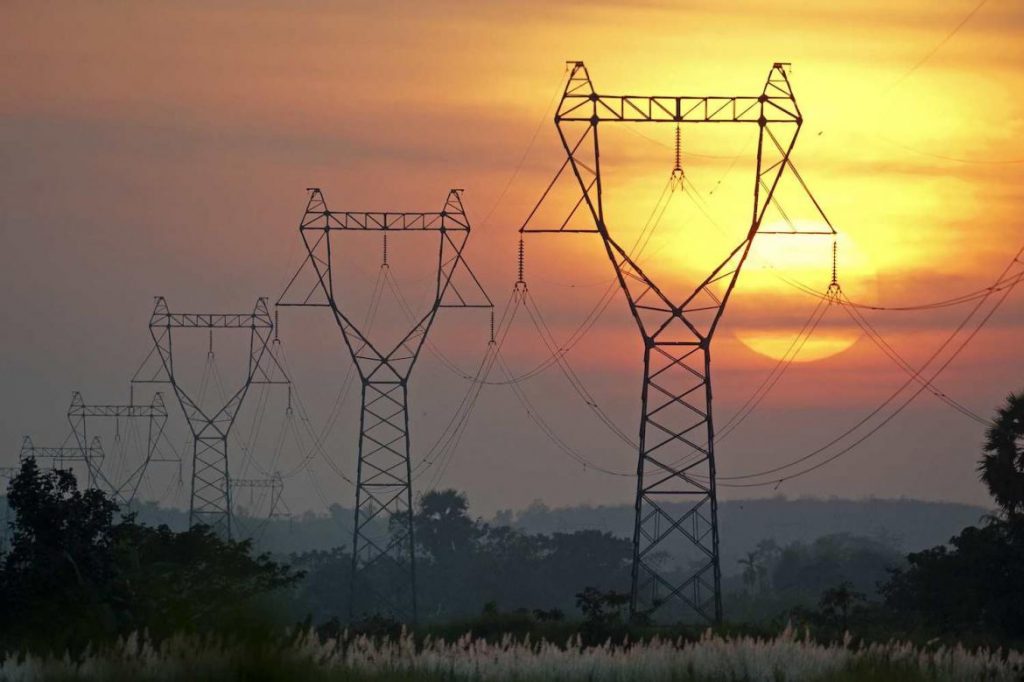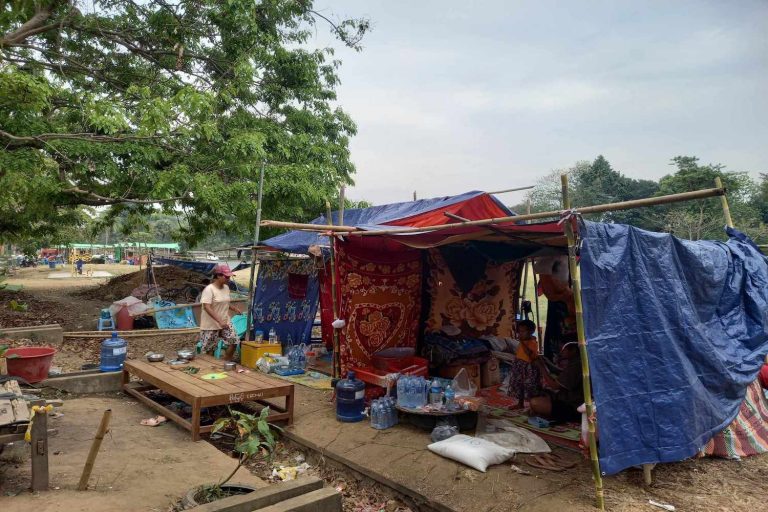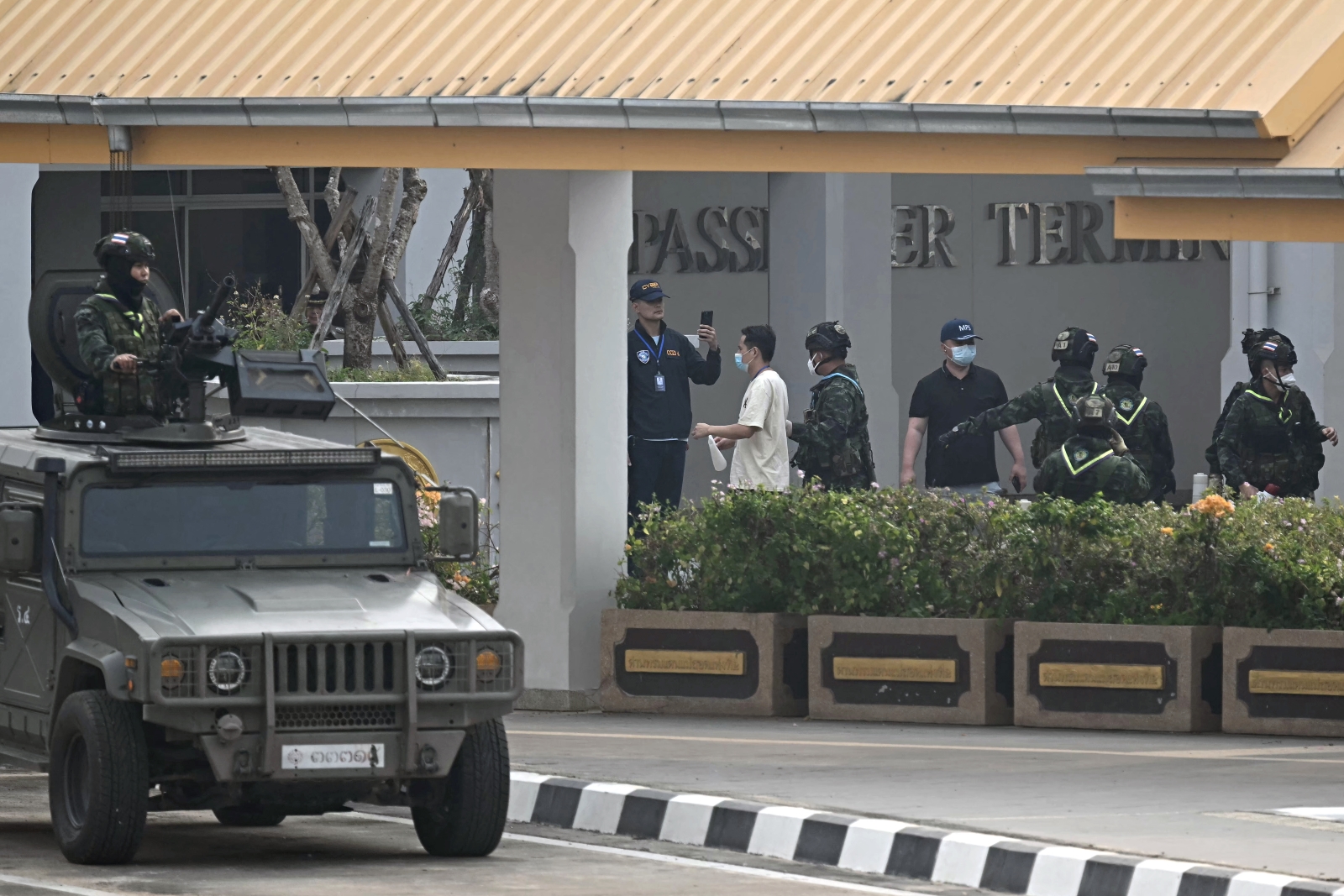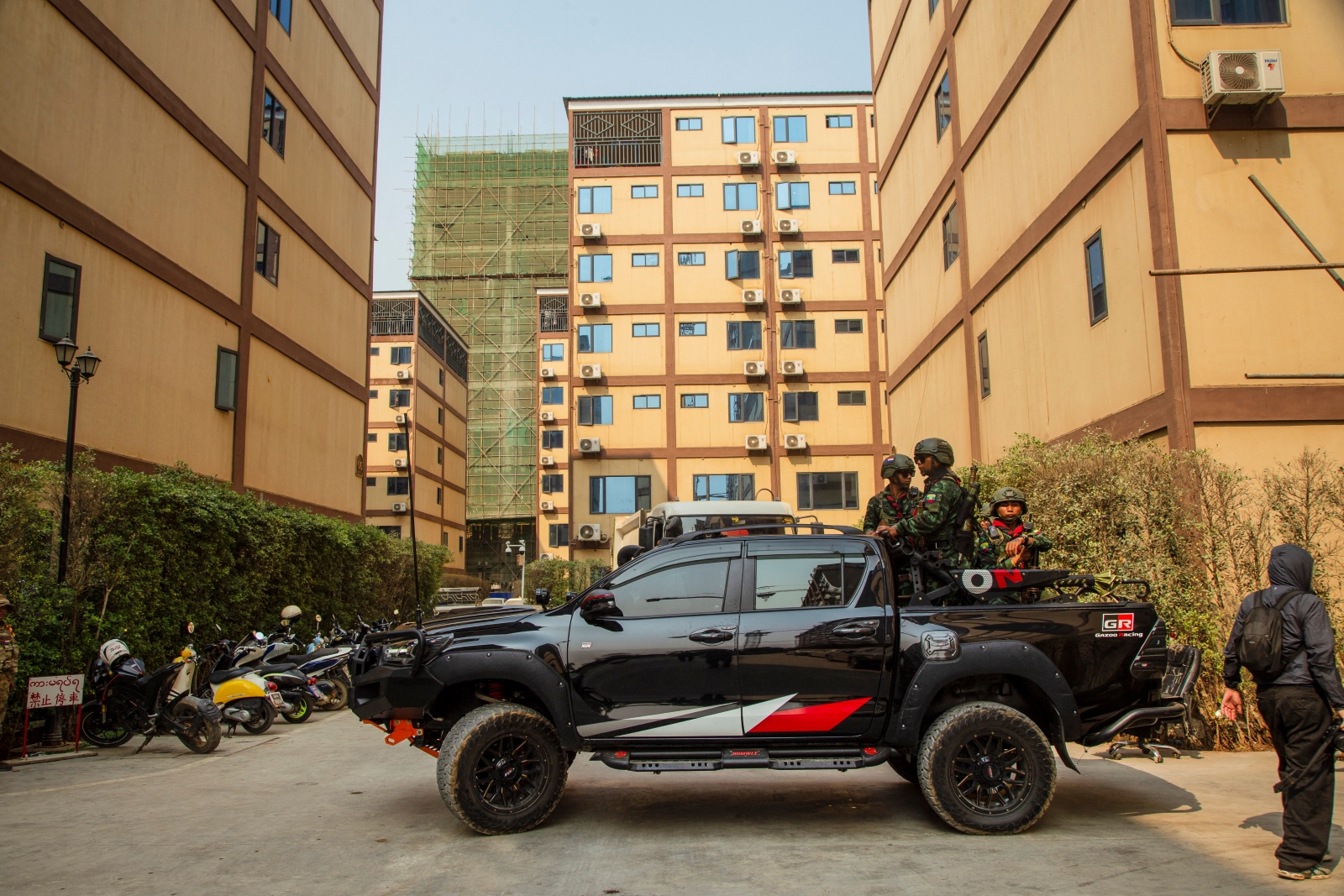Lower than expected power demand due to cooler weather and the impact of COVID-19 means lengthy power cuts are unlikely this hot season despite delays to three emergency power projects.
By KYAW YE LYNN and THOMAS KEAN | FRONTIER
YANGON – Delays to emergency power projects are not expected to cause major power shortages this hot season, a Yangon Electricity Supply Corporation official says, because COVID-19 has forced many businesses – particularly factories – to temporarily close or scale back operations.
The government announced an emergency power tender last year following severe power shortages in May and June, saying it was necessary to avert more cuts this hot season. The season typically starts in March and ends in late May with the arrival of the first monsoon rains.
Of the five emergency projects tendered last year, the three largest – a 400-megawatt plant at Thaketa, 350MW plant at Thanlyin and 150MW plant at Kyaukphyu – were due to begin producing power on April 3, but are still not operational and appear months away from completion. All three projects will be fuelled by imported liquefied natural gas.
However, U Kyaw Thu, the general manager for electricity distribution at Yangon Electricity Supply Corporation, told Frontier that he was “confident” there would not be widespread power outages this hot season.
Support independent journalism in Myanmar. Sign up to be a Frontier member.
He said this was because power consumption had been similar to last year – well down on projections for a 10 to 15 percent increase in demand, following the pattern of previous years – and other planned power projects should come online in the next month.
“Power consumption has not increased much because of the [cooler] weather and the closure of some factories and businesses due to the coronavirus,” he said.
Ministry of Electricity and Energy data shows daily peak production was around 3,700MW in March, but fell to 3,500MW on April 6, suggesting a decline in demand. This time last year peak production was about 3,500MW to 3,600MW each weekday. The ministry has previously said it expects peak demand to hit 4,531MW in 2020-21.
The impact of COVID-19 on Chinese manufacturing led to a shortage of raw materials for Myanmar’s factories, prompting several to shutter or reduce output in February and March. Although Chinese output has ramped back up and sourcing raw materials is now easier, the spread of COVID-19 to Europe has affected orders of garments, which are Myanmar’s top export item by value at around US$4.6 billion a year. This has meant that factories continue to close, lay off workers or cut their hours.
COVID-19 has also prompted many other businesses to either close or introduce work from home policies, which will likely diminish demand for power over the coming months even further. Although much of the workforce being told to stay at home will lead to a surge in domestic power use – particularly from air conditioners, as temperatures reach 40 Celsius – this unlikely to match the normal output of the factories, office blocks and shopping malls that are closing.
Unclear timelines
Kyaw Thu from YESC said that three other power projects – a 150MW plant at Ahlone in Yangon Region, a 20MW plant at Kyun Chaung in Magway Region and a 40MW ¬plant at Shwe Daung in Bago Region – should come online “in a few weeks or in a month”, and that this would be enough to meet demand for the rest of the hot season. All three projects are fuelled by domestic natural gas rather than imported fuel.
“Even if it is not the extra 1,000MW we had expected, in the current situation we are confident that we can provide relatively stable power supply this hot season.”
However, the status of the Ahlone, Kyun Chaung and Shwe Daung projects is unclear, particularly given the impact that COVID-19 has had on global movements of equipment and labour in recent months.
The Myanmar Times reported on April 5 that the Ahlone project, which is being implemented by a consortium led by Chinese state-owned firm Energy China, was “nowhere near completion”.
A spokesperson for Hong Kong-listed company VPower, which is implementing the Kyun Chaung project, said it is making “good progress” and is on track for completion “during the summer season of 2020”, without elaborating.
As Frontier reported on April 4, COVID-19 has been a factor in the emergency power projects facing delays, and may enable the consortium behind the power plants to avoid fines of almost $300,000 a day for the missing the deadline.
The three projects are being developed by a consortium comprising China’s state-owned China National Technical Import and Export Corporation and VPower, with RGK+Z&A Group as a local partner.
It is unclear when the emergency power projects will come online. Although officials from Electric Power Generation Enterprise insisted recently the projects would only be late by “days”, they appear to be potentially months away from completion.
A spokesperson for the consortium said only that, similar to Kyun Chaung, it expects to complete the three projects “during the summer season of 2020”. However, the spokesperson said that the power purchase agreements for the projects, which set the price the government will pay the consortium for the power generated, have not yet been agreed.
“The consortium has been informed by EPGE that the PPAs are being circulated within the government and are expected to be signed in May 2020,” the spokesperson said.
When Frontier visited the consortium’s Thilawa project site in eastern Yangon – from where liquefied natural gas will be offloaded for use at both Thanlyin and Thaketa – on April 2, there were few workers present and key infrastructure, including the jetty, remained incomplete.
The tanker for the project, CNTIC VPower Global, is still in Dalian, China, and key Chinese personnel for the project have not yet arrived in Myanmar, which has closed its borders to nearly all foreign nationals until at least April 30.
Even when the infrastructure is ready, it will require up to a week of test runs before full operations can begin, ministry officials have told Frontier







